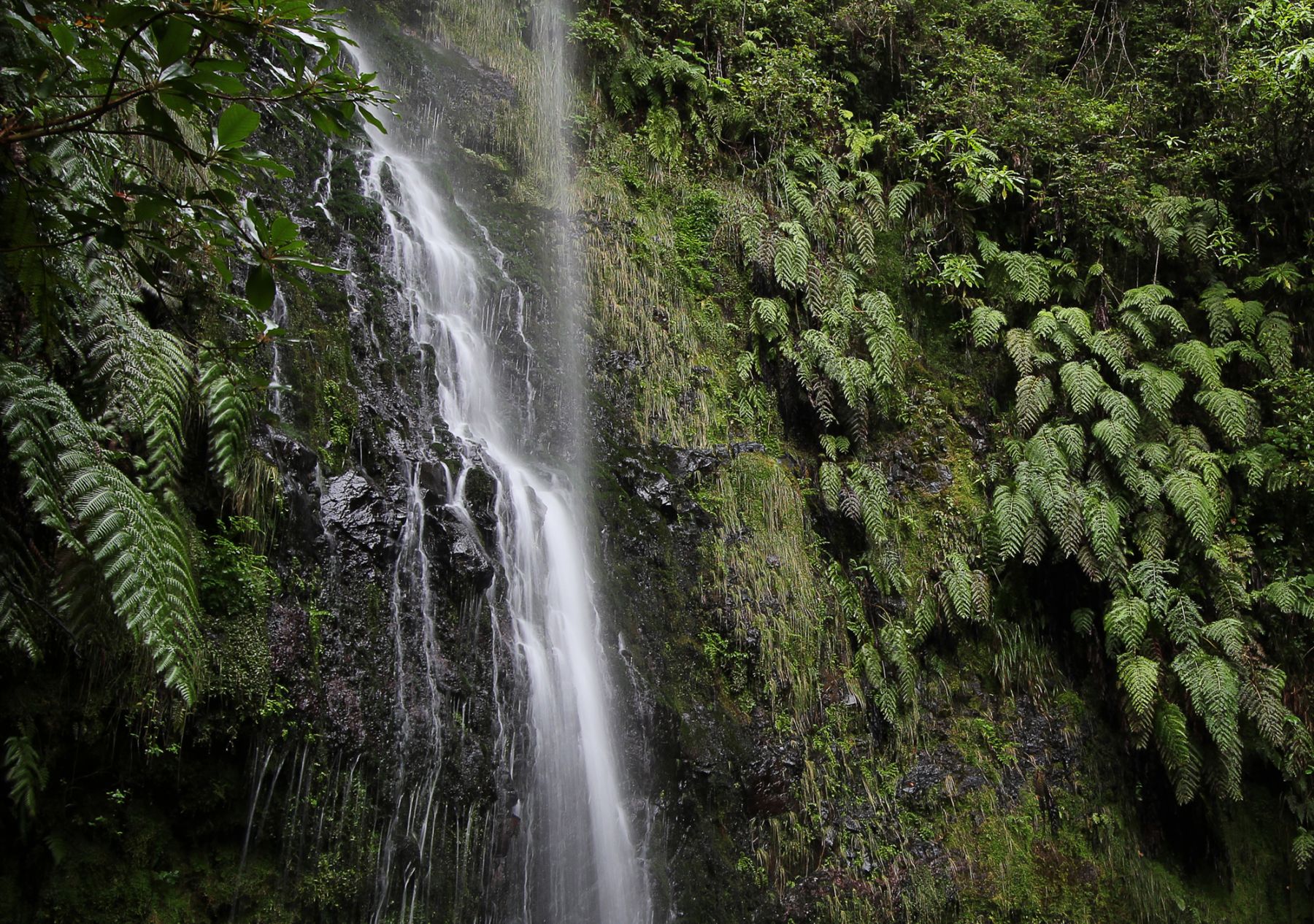Plants
In nature plants grow on vertical surfaces like cliffs or tree trunks. Such growing environments have little or no soil, good drainage and provide stable support for roots to attach to. Our planting system replicates these conditions while creating an ideal vertical growing environment for this specific group of plants.
Chosing plants for the outdoor vertical garden
Outdoor vertical gardens require a plant selection suitable to the local climate and sun exposure. For example a sun-exposed wall in the Mediterranean can be planted with aromatic plants like Lavandula, Thymus, Rosmarinus or Salvia, whereas a shaded wall in the same location can look almost tropical with plants as Arum, Davallia, Asplenium, Begonia and Fuchsia. As with any garden it’s key choosing the right plant for the right location.
Plants suited for indoor climate
Indoor climate normally equals low light levels and around 20° C. Plants for such environments can be found under the tropical forest canopy where little light filters through and life is adapted to deep shade. Common plants used indoors are aroids like Philodendron, Anthurium and Epipremnum, gesneriads like Aeschynanthus, Columneaand Streptocarpus, ferns such as Nephrolepis, Pteris and Cyrtomium.
Our expertise in plants for vertical gardens
We have long been dedicated to vertical gardening and explored the unique growing conditions and plants that naturally occupy vertical surfaces. Through regular fieldtrips and years of testing and seeing our installations mature we have developed a good sense of which plants that work.
![Plants_Vertical-Garden-Design_Epiphyte_Amazon_Peru.jpg]()
Plants growing on other plants are called epiphytes and are a reliable group of plants for vertical gardens. They are more common in tropical climates as their roots are not in contact with soil, relying on frequent rain showers for water. Pictured is a bromeliad in the cloud forest along the Peruvian Andes.
![Plants_Vertical-Garden-Design_Lithophyte_Drakensbergs-South-Africa.jpg]()
Plants that grow on rocks are called lithophytes and adapt well to vertical gardens as they have roots that can hold them attached to a bare surface. As with epiphytes they require a growing location with good drainage. Pictured is a Xerophyta longicaulis in Drakensberg, South Africa.
![Plants_Vertical-Garden-Design_Waterfall_Madeira.jpg]()
Availability of water is a limiting factor for plant growth on vertical rock faces. That is not the case nearby waterfalls that often host a diversity of plants and can be an interesting place to study for the vertical gardener. The image above shows a waterfall in Madeira with the large growing fern Woodwardia radicans along both sides.
![Plants_Vertical-Garden-Design_Philodendron_Arenal-Costa-rica.jpg]()
Aroids are a very useful plant family for the vertical gardener. There is an abundance of aroids with large and ornamental foliage that make spectacular accent plants, as well as inconspicuous varieties providing a reliable green coverage. Pictured is a Philondendron verrucosum in Costa Rica.
![Plants_Vertical-Garden-Design_Begonia-Costa-rica.jpg]()
Begonias grow in the tropics and subtropics all around the world and is one of the largest genera among flowering plants. Many are found growing in shadowed locations below a canopy or on moist, shadowed cliffs. Such species are well suited for indoor vertical gardens, or on shadowed exterior walls where light intensity is low. The low light preference also makes begonias a common house plant of which there are innumerable horticultural varieties. Pictured is a Begonia multinerva in Costa Rica.
![Plants_Vertical-Garden-Design_Ferns_Sintra-Portugal.jpg]()
Ferns grow in a large variety of habitats, and many are well suited for vertical gardens. Pictured is a Davallia canariensis in Sintra, Portugal, one of few epiphytes in this region.
![Plants_Vertical-Garden-Design_Habitat_Wulingyuan.jpg]()
Vertical growing locations in nature often are soilless, such as cliff faces and tree trunks; soil simply tend to erode or fall off from such exposed locations. Plants here have roots that grow attached to the bare surface and fix them securely through storms and rain showers. The pictured pinnacles are in Wulingyuan, China.
![Plants_Nandi falls.jpg]()
Nature’s vertical landscapes are our biggest inspiration: the wild tapestries of epiphytes and lithophytes hanging on cliff faces and tree trunks. We strive to bring some of this wilderness into our creations; making naturalistic planting designs where each plant can unfold to its full capacity. Image from Nandi Falls, South Africa.







